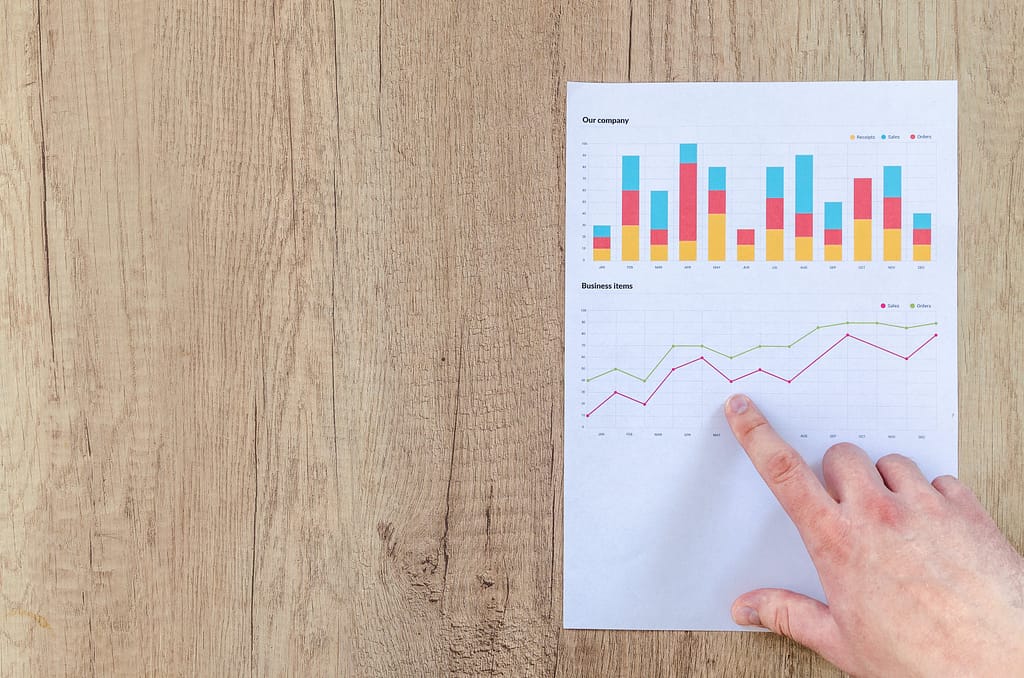Are you a restaurant owner looking to boost your profits? Managing your restaurant’s finances is crucial for achieving optimal profitability. In this article, we will explore effective strategies and tips to help you navigate the complex world of restaurant finances. From budgeting and cost control to understanding key financial statements, we’ve got you covered. So grab a cup of coffee and get ready to take your restaurant’s financial management to the next level!
Budgeting and Expense Control
Create a comprehensive budget
To effectively manage restaurant finances, the first step is to create a comprehensive budget. This involves analyzing historical data, forecasting sales and expenses, and setting financial goals. Your budget should include all aspects of your operations, such as food and beverage costs, employee wages, rent, utilities, and marketing expenses. By having a clear understanding of your financial expectations, you can make informed decisions on where to allocate resources and identify potential areas for cost-cutting.
Track and analyze expenses
Tracking and analyzing expenses is crucial for identifying areas of excessive spending and potential areas for improvement. By diligently monitoring and categorizing your expenses, you can gain insights into your cost structure and make data-driven decisions. This includes regularly reviewing invoices, receipts, and financial statements. By analyzing expense patterns, you can identify trends and take action to mitigate unnecessary costs.
Monitor payroll costs
Labor costs are often one of the biggest expenses for restaurants. To control these costs, it is important to monitor and optimize your payroll. This involves efficiently scheduling staff based on projected sales, minimizing overtime expenses, and implementing effective training programs to increase employee productivity. By closely monitoring and managing your payroll costs, you can ensure that you are maximizing your resources and maintaining profitability.
Control food and beverage costs
Another critical aspect of managing restaurant finances is controlling food and beverage costs. This involves closely monitoring inventory levels, implementing portion control measures, and regularly reviewing vendor prices. By negotiating favorable contracts and terms with suppliers, you can minimize costs and maximize profitability. Additionally, continuously analyzing menu profitability and customer feedback can help you identify popular and profitable items, allowing you to make strategic adjustments to your menu offerings.
Financial Reporting and Analysis
Generate accurate financial statements
Accurate financial statements are essential for understanding the financial health of your restaurant. These statements, including income statements, balance sheets, and cash flow statements, provide a snapshot of your business’s performance. By generating accurate financial statements, you can evaluate your revenue, expenses, assets, and liabilities. This allows you to make informed financial decisions, identify areas of improvement, and track your progress towards your financial goals.
Perform regular financial analysis
Performing regular financial analysis helps you gain a deeper understanding of your restaurant’s financial performance. This involves calculating key financial ratios, such as gross profit margin, return on investment, and break-even point. By analyzing these ratios and comparing them to industry benchmarks, you can assess your restaurant’s profitability and financial efficiency. Financial analysis also helps you identify areas for improvement and make data-driven decisions to optimize your operations.
Identify key performance indicators
Key performance indicators (KPIs) are quantifiable metrics that reflect the performance and success of your restaurant. These metrics can vary depending on your specific goals and objectives, such as average order value, table turnover rate, or customer satisfaction ratings. By identifying and monitoring relevant KPIs, you can track your progress, identify trends, and make informed decisions to improve your restaurant’s financial performance.
Utilize accounting software
Utilizing accounting software can streamline your financial reporting and analysis processes. These software solutions help automate tasks such as bookkeeping, invoicing, and payroll management, saving valuable time and reducing the risk of errors. Additionally, accounting software provides real-time financial insights, allowing you to make informed decisions based on accurate and up-to-date data. By leveraging technology, you can improve the efficiency and accuracy of your financial management processes.
Cash Flow Management
Maintain a cash reserve
Maintaining a cash reserve is essential for managing unexpected expenses or fluctuations in revenue. By setting aside a portion of your revenue as cash reserves, you can ensure that you have the necessary funds to cover emergencies or capitalize on business opportunities. A general guideline is to maintain a cash reserve equivalent to three to six months of operating expenses. Having a healthy cash reserve provides a sense of financial security and stability.
Monitor cash flow regularly
Monitoring your cash flow regularly allows you to have a clear understanding of the money coming in and going out of your restaurant. By analyzing your cash flow statement, you can identify trends, spot potential cash flow issues, and make adjustments to optimize your cash flow. For example, if you notice a significant delay in customer payments, you can implement effective invoicing and payment systems to improve your cash collection process.
Implement effective invoicing and payment systems
Efficient invoicing and payment systems are crucial for maintaining a healthy cash flow. By implementing clear and transparent invoicing processes, you can ensure that your customers are aware of their payment obligations and reduce the risk of late or missed payments. Utilizing electronic payment methods, such as online payment gateways or mobile payment solutions, can expedite the payment process and improve cash flow. Regularly follow up on overdue payments to minimize outstanding balances and improve cash flow.
Manage inventory and procurement efficiently
Managing inventory and procurement efficiently is essential for controlling costs and optimizing cash flow. By closely monitoring inventory levels and implementing inventory management systems, you can avoid excessive stockpiling or wastage. Regularly reviewing and comparing vendor prices ensures that you are getting the best deals and avoiding unnecessary expenses. Additionally, establishing good relationships with suppliers can lead to favorable credit terms and discounts, further improving your cash flow.
Pricing and Menu Planning
Set competitive and profitable prices
Setting competitive and profitable prices is crucial for attracting customers while maintaining profitability. Conduct market research to understand the pricing trends in your industry and local market. Consider factors such as your target customer base, competitors’ prices, and the perceived value of your offerings. By setting prices that balance customer satisfaction and profitability, you can maximize revenue and achieve optimal profitability.
Analyze menu profitability
Analyzing the profitability of your menu items helps you identify which items are driving revenue and which ones may be dragging down profitability. By calculating the cost of ingredients, preparation time, and portion sizes, you can determine the profitability of each menu item. This analysis allows you to make informed decisions about which items to promote, modify, or remove from your menu. Regularly updating your menu based on profitability analysis ensures that you are offering items that maximize revenue and satisfy customer preferences.
Update and revise menu offerings
Regularly updating and revising your menu offerings is essential for keeping up with customer preferences, trends, and seasonality. Consider customer feedback, dietary trends, and popular ingredients when introducing new dishes or modifying existing ones. By offering a diverse and appealing menu, you can attract a wider customer base and increase customer satisfaction. Additionally, regularly reviewing the performance of new menu items helps identify successful additions and eliminates underperforming options.
Monitor customer feedback and demand
Monitoring customer feedback and demand provides valuable insights into customer preferences and satisfaction levels. Encourage customers to provide feedback through comment cards, online reviews, or surveys. Analyze this feedback to identify areas for improvement or potential menu adjustments. By staying attuned to customer preferences, you can adapt your offerings to meet their expectations and enhance customer loyalty.
Labor Cost Management
Optimize staff scheduling
Optimizing staff scheduling helps you control labor costs while ensuring adequate staffing levels to meet customer demand. Analyze historical sales data, seasonal variations, and customer traffic patterns to forecast staffing needs accurately. Implement efficient scheduling practices, such as cross-training employees, utilizing part-time or seasonal staff, and implementing flexible scheduling options. By optimizing staff scheduling, you can minimize unnecessary labor expenses and maintain service standards.
Control overtime expenses
Overtime expenses can quickly add up and impact your labor costs. Implement policies and procedures to control overtime, such as limiting the availability of overtime hours, encouraging shift swaps among employees, and adjusting staffing levels based on demand. By closely monitoring and controlling overtime expenses, you can effectively manage labor costs and improve overall profitability.
Implement effective training programs
Implementing effective training programs ensures that your staff members are adequately equipped with the knowledge and skills required to perform their roles efficiently. Training programs should cover areas such as food preparation, customer service, and sales techniques. Well-trained employees are more productive, make fewer mistakes, and contribute to a positive customer experience. By investing in training, you can increase employee efficiency and reduce the need for excessive labor hours.
Utilize technology to increase productivity
Leveraging technology can significantly improve productivity and streamline various restaurant operations. Consider implementing restaurant management software, point-of-sale systems, and online ordering platforms to automate tasks, reduce manual errors, and improve efficiency. Technology can also help with staff scheduling, inventory management, and reporting, providing real-time insights and reducing administrative burdens. By embracing technology, you can optimize labor utilization and improve overall productivity.
Tax Planning and Compliance
Understand tax obligations
Understanding your tax obligations is crucial for avoiding penalties and staying compliant with tax regulations. Familiarize yourself with the tax laws and regulations that apply to your restaurant, including sales tax, payroll tax, and income tax. Keep up-to-date with any changes or updates to tax laws to ensure that you are meeting your obligations and maximizing tax benefits.
Maintain proper records and documentation
Maintaining proper records and documentation is essential for accurate tax reporting and compliance. Keep organized records of income, expenses, invoices, receipts, and employment documents such as W-2 forms or 1099s. Utilize accounting software or electronic record-keeping systems to streamline this process and ensure that your records are easily accessible and complete.
Seek professional tax advice
Seeking professional tax advice from a qualified accountant or tax professional is highly recommended. They can provide expert guidance on tax planning, deductions, and credits specific to the restaurant industry. A professional tax advisor can help you maximize tax benefits, minimize tax liabilities, and navigate any complex tax issues that may arise.
Stay updated with tax regulations
Tax regulations are subject to change, and it is crucial to stay updated with any new rules or requirements. Regularly review tax updates, publications, or newsletters from government tax agencies. Consider attending seminars or workshops on tax topics relevant to the restaurant industry. By staying informed, you can ensure compliance and avoid any penalties or legal issues related to tax matters.
Vendor Management and Negotiation
Build strong relationships with vendors
Building strong relationships with vendors is beneficial for your restaurant’s financial success. Cultivate open lines of communication and establish a partnership mentality with your vendors. Strong relationships can lead to negotiated pricing, favorable credit terms, and priority access to high-quality products. Regularly communicate your needs and expectations to vendors, and foster a sense of mutual trust and cooperation.
Negotiate favorable contracts and terms
Negotiating favorable contracts and terms with vendors can help reduce costs and increase profitability. Take the time to analyze multiple vendor options and compare pricing, quality, and service offerings. Negotiate volume discounts, extended payment terms, or loyalty incentives that benefit your restaurant. Remember, successful negotiations are a win-win for both parties, so strive for mutually beneficial agreements.
Regularly review and compare vendor prices
Regularly reviewing and comparing vendor prices ensures that you are receiving competitive pricing for your supplies. Set up a system to regularly review vendor prices and the quality of the products they provide. By periodically comparing prices and quality, you can identify opportunities to switch vendors or negotiate lower prices, ultimately reducing your expenses and improving profitability.
Consider group purchasing or bulk discounts
Group purchasing or joining a purchasing consortium can provide significant cost savings for your restaurant. By pooling resources with other restaurants in your area, you can benefit from bulk purchasing power and negotiate lower prices with vendors. Additionally, collaborating with others in the industry can provide networking opportunities and shared knowledge, further enhancing your vendor relationships and financial success.
Debt Management
Carefully consider borrowing options
If you need to borrow funds for your restaurant, carefully consider your borrowing options. Evaluate the interest rates, repayment terms, and associated fees of different financing options, such as loans, lines of credit, or leasing arrangements. Consider consulting with a financial advisor to assess the feasibility and financial impact of taking on debt.
Evaluate interest rates and repayment terms
When considering borrowing options, pay close attention to the interest rates and repayment terms offered by lenders. Lower interest rates and favorable repayment terms can help reduce the overall cost of borrowing and improve your cash flow. Analyze and compare multiple loan options to ensure that you choose the option that best aligns with your financial goals and capabilities.
Create a repayment plan
Creating a repayment plan is essential for managing your debt effectively. Calculate the monthly or periodic payments required to repay your debt within the agreed-upon timeframe. Incorporate these payments into your budget to ensure that they are accounted for and prioritize them alongside other expenses. By planning and adhering to a structured repayment plan, you can minimize interest costs and eliminate debt efficiently.
Minimize debt and manage cash flow effectively
Minimizing debt and managing cash flow effectively go hand in hand. Avoid taking on unnecessary or excessive debt that may strain your cash flow. Regularly review your expenses and revenue streams to identify potential cash flow issues and adjust your operations accordingly. By prioritizing cash flow management and minimizing debt, you can maintain financial stability and optimal profitability.
Risk Management
Ensure proper insurance coverage
Ensuring proper insurance coverage is crucial for protecting your restaurant from potential risks and liabilities. Obtain adequate insurance coverage for property damage, general liability, workers’ compensation, and any other relevant areas. Regularly review and update your insurance policies to account for changes in your operations or industry regulations. In the event of unforeseen incidents or accidents, having proper insurance coverage can save you from significant financial losses.
Implement safety protocols and training
Implementing safety protocols and providing training to your staff helps minimize the risk of accidents or injuries at your restaurant. Develop clear guidelines for food handling, equipment usage, and workspace safety. Conduct regular training sessions to ensure that employees are aware of and adhere to safety protocols. By proactively addressing safety concerns, you can reduce the potential for financial losses and liability claims.
Manage legal and compliance risks
Managing legal and compliance risks involves staying updated with relevant laws and regulations and ensuring that your restaurant operates within the legal framework. Regularly review and understand applicable labor laws, health codes, zoning regulations, and any other legal requirements specific to the restaurant industry. Implement policies and procedures that promote compliance and seek legal advice when needed.
Mitigate potential financial risks
Mitigating potential financial risks requires identifying and addressing vulnerabilities in your operations. Conduct a risk assessment to identify areas where your restaurant may be exposed to financial risks, such as revenue fluctuations, supply chain disruptions, or competition. Develop contingency plans and implement risk management strategies to minimize the impact of these risks. Being proactive in mitigating financial risks can help protect your restaurant’s financial health and ensure long-term success.
Continuous Evaluation and Improvement
Regularly review financial performance
Regularly reviewing your restaurant’s financial performance is critical for identifying areas of strength and areas requiring improvement. Establish a schedule to analyze and evaluate financial data, preferably on a monthly or quarterly basis. Review key financial metrics, compare performance to industry benchmarks, and identify trends or patterns. By continuously monitoring your financial performance, you can make informed decisions and take timely action to improve profitability.
Seek professional advice and guidance
Seeking professional advice and guidance from qualified professionals, such as accountants or business consultants, can provide valuable insights and perspectives on managing your restaurant’s finances. Professionals experienced in the restaurant industry can offer expert advice on financial strategies, tax planning, and operational efficiencies. By tapping into their knowledge and expertise, you can gain new perspectives, identify blind spots, and implement best practices for financial management.
Identify areas for improvement
Identifying areas for improvement is crucial for adapting to changes in the market and continually enhancing your financial performance. Regularly evaluate different aspects of your restaurant operations, such as cost control, customer service, menu offerings, or marketing strategies. Analyze customer feedback, sales data, and operational metrics to pinpoint areas that may require adjustment or enhancement. By proactively seeking areas for improvement, you can stay ahead of the competition and maintain financial success.
Set goals and benchmarks for profitability
Setting goals and benchmarks for profitability provides a clear direction and targets for your financial performance. Establish both short-term and long-term goals that are specific, measurable, achievable, relevant, and time-bound (SMART). Monitor your progress towards these goals, adjust strategies as necessary, and celebrate milestones and achievements. By setting clear goals and benchmarks, you can create a roadmap for financial success and continually strive for optimal profitability.
Managing restaurant finances for optimal profitability requires a comprehensive approach that encompasses budgeting, financial reporting, cash flow management, pricing, labor cost control, and risk management. By implementing the strategies outlined in this article and continuously evaluating and improving your financial practices, you can position your restaurant for long-term success, maximize profitability, and thrive in a competitive industry.





